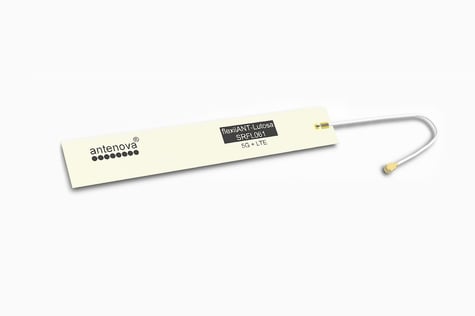The move to 5G continues apace, with South Korea, China and the US leading the way. Most European countries and the UK are installing 5G networks.
In the US, the 5G spectrum goes from 617-698MHz and from 698MHz to 960MHz in the Sub-GHz range. Above 1GHz, the most common 5G bands are 2.3GHz, 2.6GHz, and 3.3-3.8GHZ. In Europe the 700MHz bands are used by many carriers for 4G and 5G, also several additional bands are used above 1GHz.
5G allows download speeds of 150-250MBps on the bands above 1GHz, about ten times as fast as 4G with ultra-low latency. This should solve capacity issues with the existing networks and enable new applications such as video streaming over 5G. Other potential applications are streaming services such as Spotify, YouTube, and other AI applications that require high bandwidth.
Where will we use 5G? Signals from 5G base stations in bands above 1GHz, will cover relatively short distances, less than a mile, and do not travel through buildings well. 5G applications are therefore likely to be used in busy urban spaces and highways. 5G in the higher band millimetre wave spectrum is ideal for busy centres of population and locations outside the current fibre broadband services. Also, 5G brings faster processing speeds as well as real time insights for smart cities and IoT.
What about antennas for 5G-enabled devices?
The antennas for 5G-enabled devices will be different. For a start the frequencies are higher, and 5G-enabled devices need antennas that can operate on several bands: 617-698MHz, 698-960MHz, 3600-4000MHz, and up to 5.9GHz (6GHz) for the US. For a 5G device to operate anywhere in the world, all of these frequencies need to be supported, and designs may need to be backwards compatible with 4G as well.
The current trend in antennas has been towards miniaturisation and more compact designs, but the antennas for 5G will have to be larger. This is because the antenna’s radiator and ground plane sizes are inversely related to the wavelength of its lowest operating frequency, and these dictate the size of the antenna. All this means that for an antenna to perform well on the 5G networks, it will usually be larger than a 4G antenna – making the PCB design slightly more challenging. Smaller 5G antennas are not likely to be as efficient and will probably cover fewer bands of operation.
There are techniques that designers can use to improve the performance of the antenna, for example, you can use tuning to optimise the performance.
5G will power the next generation of apps
The big IT and cellular companies predict that 5G will be used in telematics, robotics, Autonomous Driver Assisted Systems (ADAS), connected healthcare, as well as cloud computing applications.
5G’s higher frequencies will be good for machine vision, smart QA and Industry 4.0 concepts that use real time data for robotics. Two important goals are for manufacturers to automate more and use energy in radically more efficient ways.
5G with AR (augmented reality) and VR (virtual reality) could be exciting for teaching within university campuses. In healthcare, 5G could enable more new data-intensive connected health services – such as remote surgery.
Much work is being done in self-driving vehicles and vehicle to vehicle communications. 5G will enable authorities to use live traffic and weather data to manage roads in real time. We may see drones using 5G networks for streaming video for law enforcement or search and rescue.
In business, 5G will work in conjunction with Wi-Fi 6 to deliver Edge Computing where data is stored and processed at the endpoints of networks so that IoT devices won’t need to connect to distant data centres any more. It will be possible to store data locally and process it faster. Companies will be able to use 5G to protect their buildings with smart safety and high definition CCTV.
In the future, post pandemic, people are likely to work from home more frequently, and less often at company sites. For those who live away from the fibre broadband networks, 5G could provide reliable, fast internet connections. 5G could bring more immersive gaming experiences with quicker response times, and faster mobile video – we’ll be able to download whole films on demand. Overall, the 5G services enables us to be more productive at work and enjoy our leisure time with many new applications that use 5G.




